The question of what sort of emergency electrical power to have for your home is one that’s open for debate. Most preppers go for solar power of some sort, but solar isn’t a perfect choice.
While solar is likely to be working after just about any disaster that leaves your home standing, each panel only puts out a small amount of power. So it takes a lot of panels to really do more than just charge your cell phone.
Generators fall kind of on the opposite end of the spectrum from solar panels. Solar panels are rather expensive to buy, for the amount of power they put out, they cost nothing to operate.
However generators produce a fair amount of power for the money invested, but with a high operating cost. This is especially true for the larger “whole house” generators that run off of propane. Running a portable generator off of gasoline is considerably cheaper, but that’s only going to work as long as gasoline is available.
Nevertheless, owning a gasoline generator for use in short-term disaster situations is a great addition to anyone’s preps. If the power is only going to be out for a few days, it’s possible to run the home’s critical electronics off of that generator.
That means having sufficient fuel on hand; but storing gasoline really isn’t all that hard, if you approach the problem logically. We store all manner of other things, why not gasoline?
Related: The Best Places Where You Can Store Fuels Safely In An Emergency
The Wrong Hookup
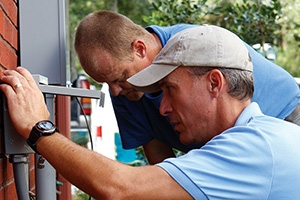
Actually, the biggest problem with using a generator isn’t whether it will work, how much the fuel will cost or whether you’ll have a source of fuel for the long term.
It’s how to hook that generator up to your home so that you can use the power it produces. Unless we’re talking whole house generators, they don’t come with a hookup for that, just a panel to plug into.
Many people’s answer to this is to make a short pigtail with male plugs at both ends. One end plugs into the generator’s power output panel and the other is plugged into the electrical outlet of your choice in the home.
While this might work if all you’re going to do is plug in one room air conditioner or the refrigerator, that’s a dangerous way to go. I highly recommend against it.
Here’s the problem. The wiring in most homes is 10 or 12 gauge. This wiring usually connects several outlets together, then goes off to the breaker box where it is connected to a 15 amp circuit breaker. That’s the most common size used in a home, with the exception of the garage, which will usually have a 20 amp breaker.
But a typical 3,500-watt portable generator can produce 29.17 amps of power, almost double the rating of that circuit breaker. A 5,000-watt portable generator, which is actually a better size for emergency power, produces 41.67 amps of power. That’s too much to go through the wiring.
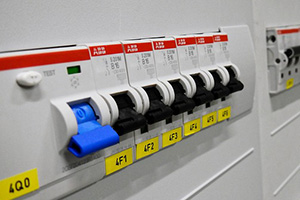 The purpose of circuit breakers is to protect the home from an electrical fire. If there is a short or too much electricity is run through a wire, it will overheat and can cause a fire.
The purpose of circuit breakers is to protect the home from an electrical fire. If there is a short or too much electricity is run through a wire, it will overheat and can cause a fire.
So, there are basically two option of what will happen if the jumper is used, running power into an outlet:
- If everything is connected to the same circuit, such as plugging it all into the same room, the wiring will overheat and cause an electrical fire.
- If everything is left connected all over the house, the circuit breaker for the circuit that the generator is plugged into will trip off, cutting power off to the rest of the house.
Another Important Connection Issue
Your home is connected to the electrical grid, through the breaker box and the power meter outside. If the grid is down and you’re producing electrical power that you’re running into your home’s electrical system, that electricity will run into the grid and disappear. You won’t get to use any of it.
Related: 11 Things You Need to Have Ready for when the Power Grid Fails
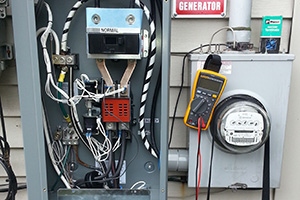 This problem is solved for whole-house generators by the installation of an automatic whole-house switch. This device monitors the electrical current flowing into your home.
This problem is solved for whole-house generators by the installation of an automatic whole-house switch. This device monitors the electrical current flowing into your home.
If the current stops, it disconnects your home from the grid and starts the generator automatically.
This ensures that all the electricity you are producing is available for your family’s use, rather than someone down the street.
When the power comes back on, the whole house switch reconnects the home to the grid, shutting off the generator.
A whole-house switch is a bit expensive. But there is a manual version as well, which can be purchased for much less. Better yet, some home breaker panels come with the main breaker, which performs this function for you. It’s a manual switch, but it does the job of disconnecting your home from the grid.
If either an automatic or manual whole house switch is used, it will provide a means of connecting the generator. But if you don’t want to spend that much money, there is a simpler answer, especially for homes that have a breaker box that includes a whole-house breaker up at the top.
The Breaker Interlock
In the case of homes with a main or master breaker in the breaker box, the easiest and least expensive means of making a safe connection for the generator is to use a breaker interlock. Put simply, this is a special circuit breaker, used just for this purpose.
It comes with a plate, which makes it impossible for the breaker interlock to be turned on unless the home’s main breaker is turned off. Materials for the whole installation should come to less than $150.
Before working on the breaker panel, be sure to shut all the breakers off, including the main breaker.
Then, once the cover is back in place, turn on the main breaker and all the others, one at a time, waiting about five seconds between each, to allow the initial surge to pass. Tripping them all on quickly, like some people do, is a good way to overload something in the system.
You’ll also want to turn off any solid-state electronic devices in the home, just like should be done during a power outage. There is often a surge when the power is turned back on, which can be damaging to electronic devices.
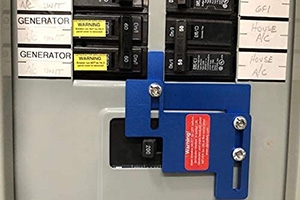
In order to install the breaker interlock, it may be necessary to move some of the existing breakers down the panel, freeing up the top two breaker locations on the right side of the panel.
This is the only location that the breaker can be installed in.
Most boxes have enough slack in the lines so that the existing breakers can be moved down two spaces, without causing problems.
Of course, the panel has to have those extra slots to put the breakers in. If it doesn’t the cost of the project will go up some, as one or two of the existing breakers will have to be replaced with double breakers to create the space needed.
The breaker interlock installs just like a normal breaker, but is wired differently. There are four wires involved:
- Red – Secondary Hot – goes to a terminal on the breaker interlock
- Black – Hot – goes to a terminal on the breaker interlock
- White – Neutral – goes to the neutral buss in the breaker box (look where all the other white wires are connected)
- Green – Ground – goes to the ground buss in the breaker box (look where all the other green wires are connected)
The other end of those wires needs to be run outside to a new box with either a 30 or 50 amp (round) connector for the generator to be connected to. These are larger than the standard 120-volt outlet which we have in our homes.
Those are only rated at 15 to 20 amps, so trying to run all the power from the generator through one of them creates the same fire risk we were talking about earlier.
Modify the Generator
Depending on the actual generator model you have, its power output and the way the outlet panel is wired, your generator may or may not have a 30 or 50 amp plug already installed in it.
However, there are a lot of generators out there (especially low-cost ones) which only have 20 amp, 120-volt outlets. If that’s the case on yours, the generator itself will need some modification.
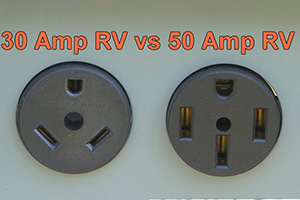 What’s needed here is to add the 30 or 50 amp connector, depending on the output of the generator. The highest power output which can be safely run through a 30 amp connector is from a 3500-watt generator. Anything rated higher than that will probably need a 50 amp connector.
What’s needed here is to add the 30 or 50 amp connector, depending on the output of the generator. The highest power output which can be safely run through a 30 amp connector is from a 3500-watt generator. Anything rated higher than that will probably need a 50 amp connector.
To install this on the generator find someplace near the existing outlets to mount a 2 gang metal electrical box. Open the existing connection panel and find the existing wires coming into it from the generator. Then add wiring from wherever these wires are connecting, to the connector in the new box.
Just remember that your total generator output doesn’t increase by adding another connector. If you’re pulling 30 amps out through this new connector, you probably won’t be able to use the other 120 volt outlets.
Related: Homemade Water Wheel Electric Generator
One last thing you’ll need is a short cable (15 ft. or so) to go from the generator to the outlet. You can make your own, buying the parts at your local building materials center or buy one that’s pre-made from an RV supply house. Just make sure it has the right connection on both ends.
Using the Generator During a Power Outage
Once you confirm that you have an actual power outage, you’ll probably need to dig the generator out of the shed or garage and park it outdoors, close to where the new outlet is. Then connect it, making sure the connectors seat all the way at both ends.
Check the generator’s gas tank and fill if necessary. Start the generator and ensure that it is running well at normal operating speed. Go indoors and turn off the main breaker, then turn off all the other breakers in the panel. Slide the protective interlock plate up and turn on the interlock breaker.
Finally, selectively turn on the breakers you need, for the critical electronics you need running. Wait about five seconds between each breaker, to allow the generator to adjust to the increased load.
Please note that a portable generator of the kind we’re talking about isn’t going to be able to run your home’s HVAC system, electric clothes dryer, or hot water heater. You might be able to run the stove and oven once the system is up and stabilized, but not if you’re using a lot of other high-energy users.
Anything with a heater of large motor is going to draw a lot of electricity. So you will need to carefully monitor and control what devices are being used. Electric heaters, clothes irons and appliances are all big energy users. While one might be able to be used at a time, that’s probably about it. More than that would overload the generator and probably cause the generator’s circuit breaker to trip.
You may also like:
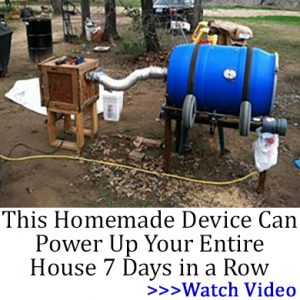 Puerto Rico: This Is What Living in a 6 Month-Blackout Looks Like
Puerto Rico: This Is What Living in a 6 Month-Blackout Looks Like
What Really Happens When You Bury A Shipping Container (Video)
5 Things You Can Do If People Find Out You’re A Prepper

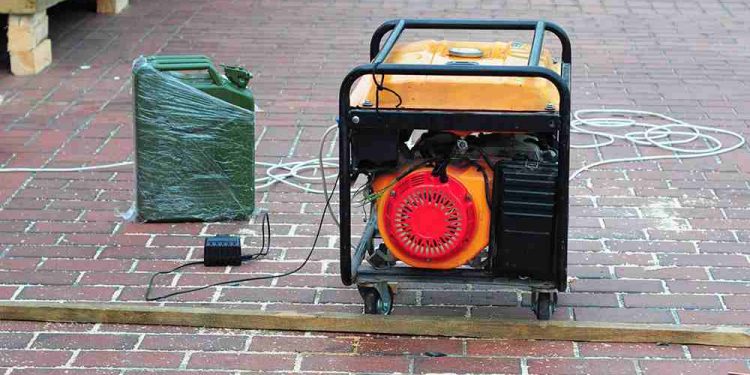




















If you are not sure how to do this get an electrician please.
If you do this wrong you can seriously mess up your house!
To say nothing of what the utility will say if you back feed them.
Having a generator for back up is a great thing for sure, just make sure you do it right. Store the fuel correctly as well.
Thanks all
The ‘double male extension’ cord is just a BAD idea ! Extension cords and wiring in general is done so that there are NO EXPOSED LIVE contact points. If plugged in and the generator is running, you have live contacts sticking out of the other end of the cord !!!l
Even a small generator can kill you.
Two thing I learned about electricity –
1) it’s a whole LOT quicker than I am and
2) it’s also a whole LOT meaner !!
Please if you don’t know or are simply not sure of HOW to do this, don’t try it Please don’t guess. Simply not isolating your home from the grid could send power to the grid and even kill some poor lineman trying to get your power back on because your generator is making the circuits he’s working on live and he has no way of knowing that !!!!
Easy-peasy (if you have basic knowledge of wiring/electricity): Construct a cable that has the large 3 prong 220 male at one end and the 3 prong 120 from your generator male at the other. Wire it such that the 120 from generator feeds BOTH the 120 prongs of the 220 male (and of course the one ground prong is to ground prong from the generator). TURN OFF THE MAIN BREAKERS IN YOUR SERVICE PANEL. Plug the 220 end of your cable into the 220 electric dryer outlet in your garage (or less desirable into the 220 electric stove outlet in your kitchen). In either case, your generator needs to be located outside and near to either of these outlets. Plug the other end of your custom made cable into the 120 outlet of your generator. Turn off most loads in your house before starting up the generator as the power used must be limited to whatever the breaker amps is for the 220 circuit that you are using to BACKFEED every 120 circuit in your home! Obviously, you can only power on e.g., 35 amps of usage if that’s what the circuit breaker that you are using for this backfeed is rated at. Since your mains are off, this method poses no risk to anyone working on the grid infrastructure that is being repaired during the outage. After the grid power is restored (have a neighbor text or phone you when this occurs), shut down your generator, unplug it from the 220 dryer outlet, then (and only then!) turn your mains back on. I’ve used this method with my 8000 watt tri-fuel generator for years for short term outages. Getting a battery backed up solar panel system this month that will give me UNLIMITED (in time) power at 800 kwh per month backup power in the future for the much longer ’emergencies’ that are coming Real Soon Now! Mahalo!
This could work, but people who don’t know what they are doing with electricity should never try to back feed a whole house electric panel. A properly wired (professional electrician) emergency whole house generator with automatic switch is the best way to go. Otherwise plug your essential appliances directly (with heavy duty 12-gauge extension cord if necessary) into the outlets on the generator (which are fused already for 120v.). whoever wrote this article should not encourage novices to back feed their household from a generator. You could kill a lineman out there up a pole in crappy weather just trying to get you up and running again!!!
Nice article. We live in a rural area and we use a system like this, with a manual breaker interlock. We paid an electrician to install it and paid the small fee for the county building permit. We found a 9,500-watt (12,500 peak) Westinghouse dual-fuel (gasoline and propane) generator for under $1000 a couple years ago. It powers our greenhouse heater and electric water heater simultaneously, along with the freezers and lights. If we want to use electric cooking appliances, then we shut off the water heater until we’re finished cooking. We keep enough gasoline on hand to run for 7 days (spiked with stabilizer) and we have enough propane to run for a couple days, which would get us through a minor disaster but we are now looking at a pricey hydropower/solar system to keep us running in a long-term situation. The only issue we have had with the manual breaker interlock system is figuring out when the utility company has the power back online. The local power company is unreliable about reporting their status (by text message or on their website), so we have used social media to figure it out in the past, but if the cell phone towers and DSL are both down, we would just have to test it every so often. We do have an LCD screen on our meter, and I haven’t checked to see if that goes blank when there is no power coming from the utility, so maybe this is the trick, but it seems like there should be a way to safely install an indicator that is upstream from the main breaker on the panel.
I simply connected a 14-2 gauge wire into the electric company input side of my master breaker, ran it thru a switch and into a socket with a light bulb mounted in a visible location. The switch is normally off but when on the generator, turn it on and when line power comes back up the bulb will light to show you do not need the generator any longer. This wire will connect Black to Black OR Black to Red and white to white and ground to ground in the breaker box.
I certainly second Consco’s recommendations. Even if you figure you are a good enough electrician to do the job and who needs the county’s permission anyway, unless you are already a journeyman electrician, bite the bullet. Hire a pro. Installing devices in your electric panel isn’t quite the same as changing out a hose bib shut off valve.
In addition, you don’t have to run all your appliances all the time as you do for convenience’s sake when you have utility company power. You can run the fridge on the generator doing the day and leave it off at night; run the freezer at night and leave it off during the day. Cover the freezer in the garage with cheap moving blankets from Harbor Freight. In fact, cover it during a electricity outage all the time except when it is hooked up to the generator.
I found out that covering the ice chests with sleeping bags or blankets while camping in the desert in the summer extended the life of the ice in them considerably. Also, planning your opening rather than constantly opening them helped the blankets and such enhance ice life.
LOL as a licensed electrician myself I would never dream of asking the county or city.
We got an electrician. It was fine to just run the little gen set for the freezer or ac but then we bought a bigger one which runs all the buildings so we can still work when the mains power goes off.
The ultimate goal is to be independent of the grid with solar, wind, batteries and generator but just can’t afford it yet.
An electrican should be able to connect one lamp directly to the bypass to tell you when the power is restored safelyif using a interlock switch that would not be connected to the generator.
Agreed. I was going to suggest this very thing.
I have been a commercial/industrial electrician for 35 years.
The problem with one size fits all advice or suggestions are that not everyone’s service panel is the same or in the same condition or of the same vintage.
Some have had multiple Billy Bob’s in them and it is nothing short of amazing they still work.
Our house is off grid completely. No grid tie at all. We built it and we know where everything is.
Get help or advice and do this right. Killing yourself or family members is not a way to “save money”.
I want a steam powered generator.
With the ability to run multiple fuel sources like wood, gas, diesel, oil, propane, etc.
Pretty simple to hook up a generator to the house IF you are competent.
Shut off mains to the house. Shut off the heat/ac, shut off the electric hot water tank.
Plug in one end of the RV extension cord to the dryer or elec stove, other end to the generator.
You might be able to ‘take turns’ with the loads like heating water but turning off other things.
Turn off other things to turn on the house heat/AC.
Turn off other things to use electric stove or clothes dryer.
If you ever lived in a very OLD house or apartment, you know you have to unplug some things to plug in other things.
If you send power back to the power company you could kill a power company worker that is working to repair the outage. Your 110 voltage goes back through the transformer and is changed to 7200 volts on the main line. A worker coming in contact with that voltage and touching a grounded line could be injured or killed.
If the worker has protective jumpers installed this would short out your generator and may burn it up.
I went a different route. I have a tri fuel generator and is in a vented shed, hooked up to a natural gas line with propane backup stored. I have two 20 amp circuits run to various outlets for freezers, refers, alarm, and a few inside to hook up some lamps. If needed, I could also run my furnace If really necessary. As long as you have a crawl space, it is easy to cut in outlets where needed. I have #10 extension cords run the distance then branched off to the different outlets with #12 wire. I’ve marked the outlets in case I’m not around. This way it is completely independent from home wiring.
what i see the most is undersizing wire , using what ever to make connections and crappy work
Right the 1st time is alway s best
Rate Every load as 80%
if 10 wire then only 24 amps
if 12 wire the only 16 amps
Dont combine loads
one plug for each circuit or unit
example : AC , Fridge, HW Htr , Etc always find out what true load is
When electical fire s occur it is when under overload for a long period of time and the circuit does not trip brkr
many time s i see the breakr not trip and a meltdown occurs , arcing , flash fire or sparks that create flames
System is always trying to go to source or Ground , return path to source
Lots of questionable information in this article. Ex: houses are wired with 12 and 14 gauge. 10 usually only on an electric water heater. 6 and 8 where needed for range and dryer. Wires are sized for the load and breakers are sized to protect the wiring. Pull too much current through existing wiring and the correctly sized and installed breaker will trip before the wire burns up…that’s the whole idea of a breaker. “Pull your generator out of the shed” If you don’t exercise your generator once a month under load, you’d better have a bunch of candles. Enough. Argue if you want.
as an electrician of over 35 years
I can tell you it is easy if dont right
Always Disconnect power 1st
Practice safe guard s
Verify before work started, then Doublecheck your work
The Reconnect after and when you are sure you have done right work
seek advice , never too much from those who know
work out the plan on paper
Then plan the right materials in hand
if dont know , not sure , no clue
hire the experts
When I converted my house from all electric heat pump to gas forced air, I made use of the 30 amp outdoor wiring junction box from my former heat pump back to the breaker panel. A master electrician converted the outdoor junction box for the heat pump to an outdoor-safe outlet that was compatible to my gen-set 240v outlet. An interlock kit was installed at the breaker panel ( as described, had to “relocate” a couple circuits to accomplish). To use, first turn off all breakers, engage interlock circuit (shuts off power to the main line connected to the grid), connect cable from gen-set to new outdoor outlet, fire up generator to energize breaker panel, and then activate breakers as needed to keep critical circuits energized. I tested and documented each circuit for amp usage to ensure I don’t overload the generator at any given time. My targeted circuits include gas furnace, fridge, freezer, and a small window a/c unit for our master bedroom (keep a/c stored in garage – for emer use only). Total cost about $500 labor and parts. 4500 W gen-set runs on gas or propane. I keep enough fuel on hand to get by for 2-3 weeks. I’d give anything to have a high efficiency wood stove for heat, but that’s not in the cards at present. This solution is safe, effective, and didn’t break the bank.